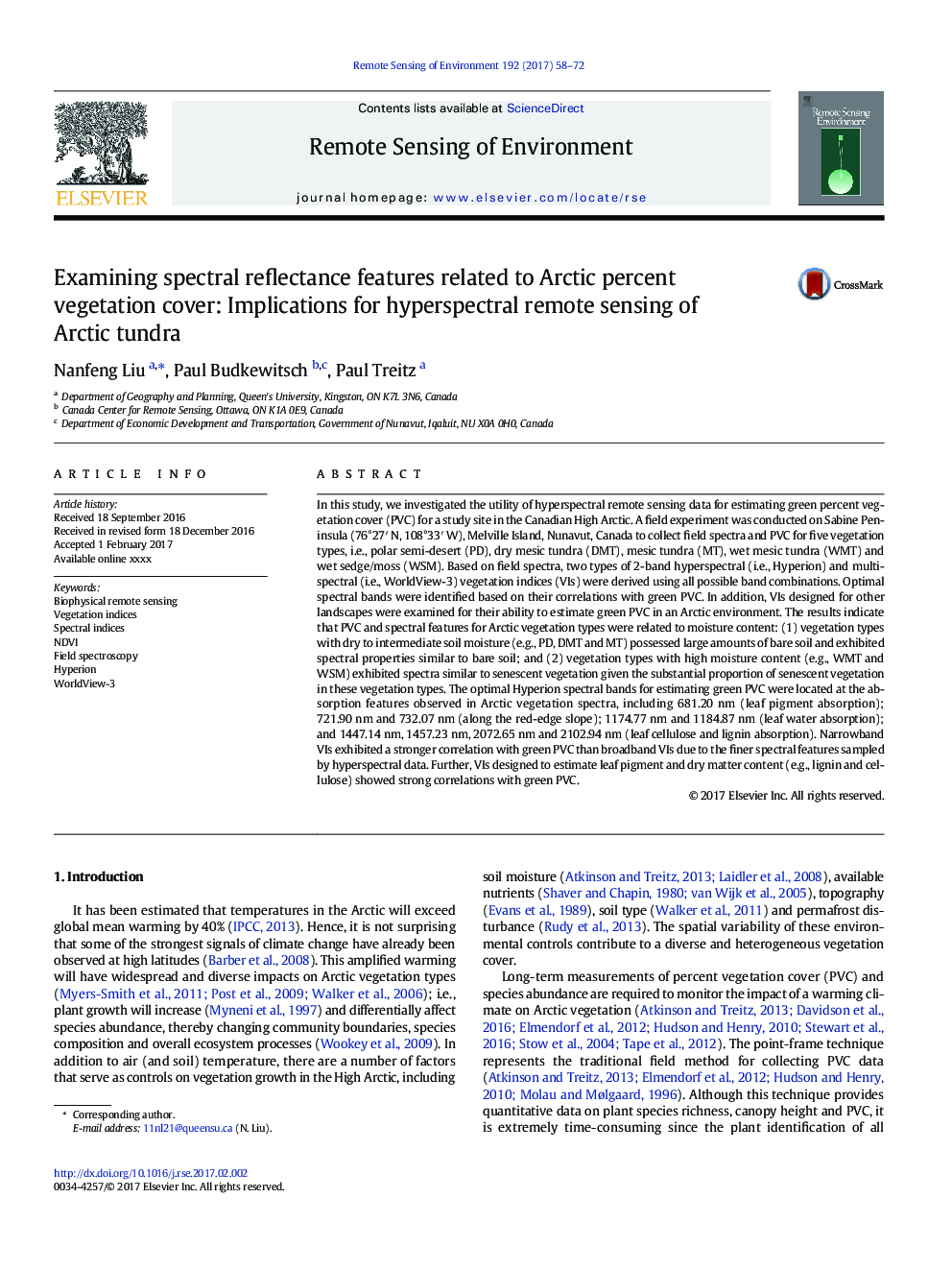| Article ID | Journal | Published Year | Pages | File Type |
|---|---|---|---|---|
| 5754870 | Remote Sensing of Environment | 2017 | 15 Pages |
Abstract
In this study, we investigated the utility of hyperspectral remote sensing data for estimating green percent vegetation cover (PVC) for a study site in the Canadian High Arctic. A field experiment was conducted on Sabine Peninsula (76°27ⲠN, 108°33ⲠW), Melville Island, Nunavut, Canada to collect field spectra and PVC for five vegetation types, i.e., polar semi-desert (PD), dry mesic tundra (DMT), mesic tundra (MT), wet mesic tundra (WMT) and wet sedge/moss (WSM). Based on field spectra, two types of 2-band hyperspectral (i.e., Hyperion) and multispectral (i.e., WorldView-3) vegetation indices (VIs) were derived using all possible band combinations. Optimal spectral bands were identified based on their correlations with green PVC. In addition, VIs designed for other landscapes were examined for their ability to estimate green PVC in an Arctic environment. The results indicate that PVC and spectral features for Arctic vegetation types were related to moisture content: (1) vegetation types with dry to intermediate soil moisture (e.g., PD, DMT and MT) possessed large amounts of bare soil and exhibited spectral properties similar to bare soil; and (2) vegetation types with high moisture content (e.g., WMT and WSM) exhibited spectra similar to senescent vegetation given the substantial proportion of senescent vegetation in these vegetation types. The optimal Hyperion spectral bands for estimating green PVC were located at the absorption features observed in Arctic vegetation spectra, including 681.20 nm (leaf pigment absorption); 721.90 nm and 732.07 nm (along the red-edge slope); 1174.77 nm and 1184.87 nm (leaf water absorption); and 1447.14 nm, 1457.23 nm, 2072.65 nm and 2102.94 nm (leaf cellulose and lignin absorption). Narrowband VIs exhibited a stronger correlation with green PVC than broadband VIs due to the finer spectral features sampled by hyperspectral data. Further, VIs designed to estimate leaf pigment and dry matter content (e.g., lignin and cellulose) showed strong correlations with green PVC.
Related Topics
Physical Sciences and Engineering
Earth and Planetary Sciences
Computers in Earth Sciences
Authors
Nanfeng Liu, Paul Budkewitsch, Paul Treitz,
